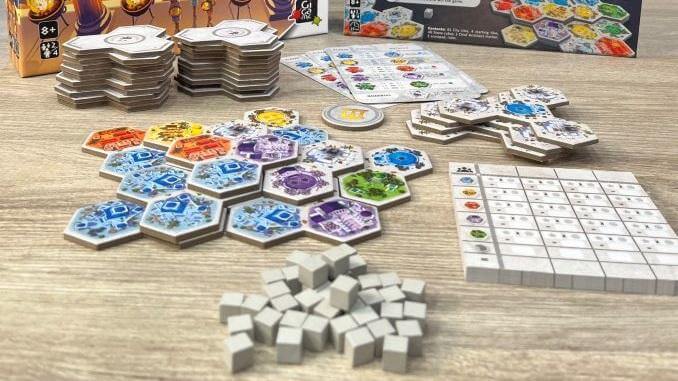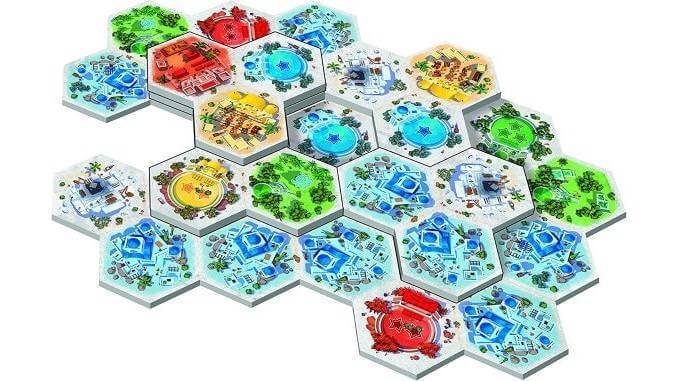The Board Game Akropolis Is Best Played with a Little Bit of Spite

Akropolis is a tile-laying game with very simple rules, but the way you place and score the tiles gives the game its heft as well as its potential for conflict with fellow players. It’s surprisingly quick to play, but don’t let that or the colorful art hide the game’s spiteful heart.
Akropolis appears to recycle a very tired theme (ancient Greece—you could substitute Egypt or Mesopotamia and the same applies), but it’s an abstract game where the theme is mostly irrelevant. You’re drafting tiles that comprise three hexagonal spaces and placing them in your city, either adjacent to what you’ve already placed or on top of existing tiles. Building upwards gains you points, although you lose anything you’ve covered up in the process. When the game ends, you count up the hexes you can see (birds-eye view) and multiply the relevant total by the number of stars in that color, getting five subtotals you’ll add together for your final score.
The first part of the game is tile-drafting; each round starts with four tiles in a line in the market, plus a stack of tiles for the next round. The one farthest from the stack is free for the active player to take; each tile closer towards the stack costs one more stone for the active player to take. The tile-drafting aspect of the game is fairly easy to manage, but you do have to ensure you don’t end up without any stones—it’s more like something everyone has to learn, and then once all players have figured this out, it isn’t a big part of the game going forward.
Each hex space on a tile can have one of six colors. The plain gray color isn’t worth any points, but can get you one stone when you cover it with another tile, so setting up areas of two to three grey hexes that you can easily cover later with another tile is also a core strategy. The other colors each score in a unique way. Blue hexes score for each hex in the largest contiguous stretch of blues. Yellow hexes score if they aren’t touching another yellow when the game ends. Purples score if they’re surrounded by other hexes. Reds score if they’re on the exterior edge of your city. Greens score no matter what. A hex is worth one point per level, so one on the table is worth one point, one on the second tier is worth two points, and so on.
-

-

-

-

-

-

-

-

-

-

-

-

-

-

-

-

-

-

-

-

-

-

-

-

-

-

-

-

-

-

-

-

-

-

-

-

-

-

-

-









































